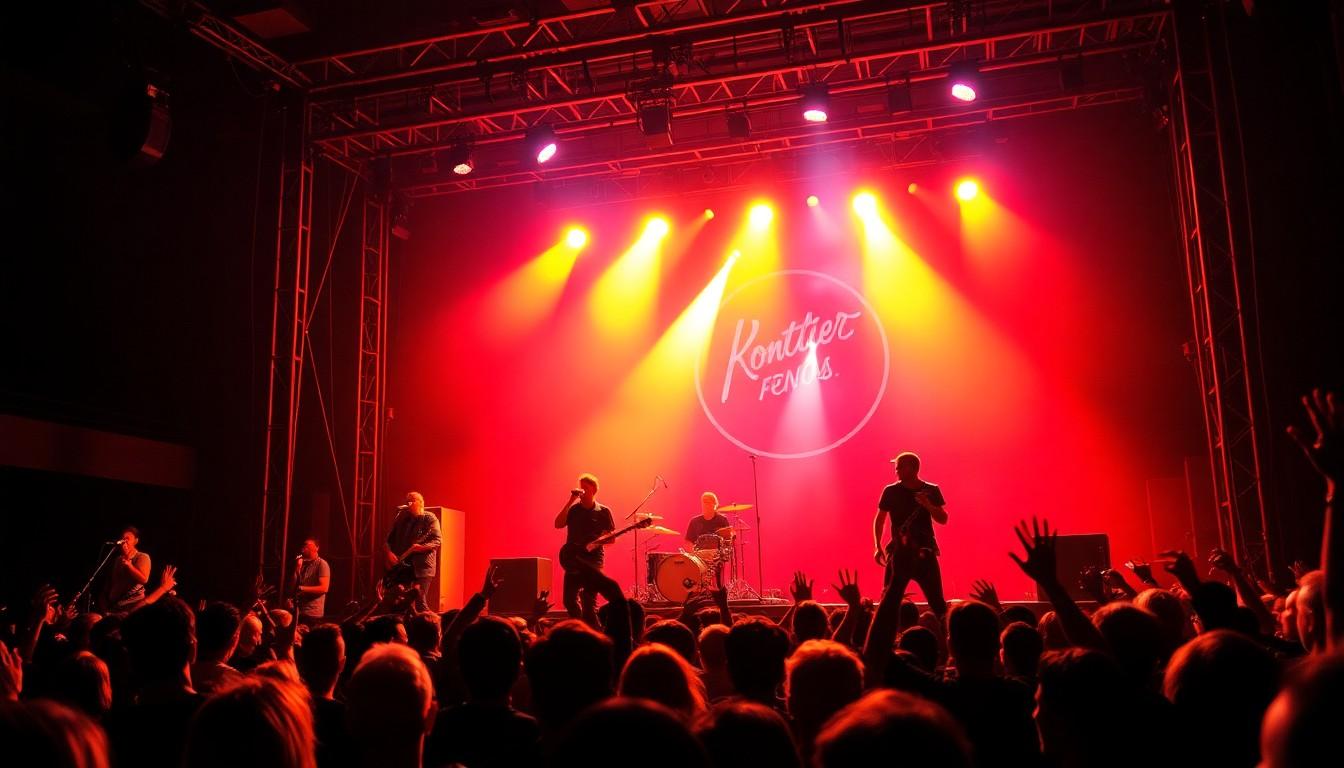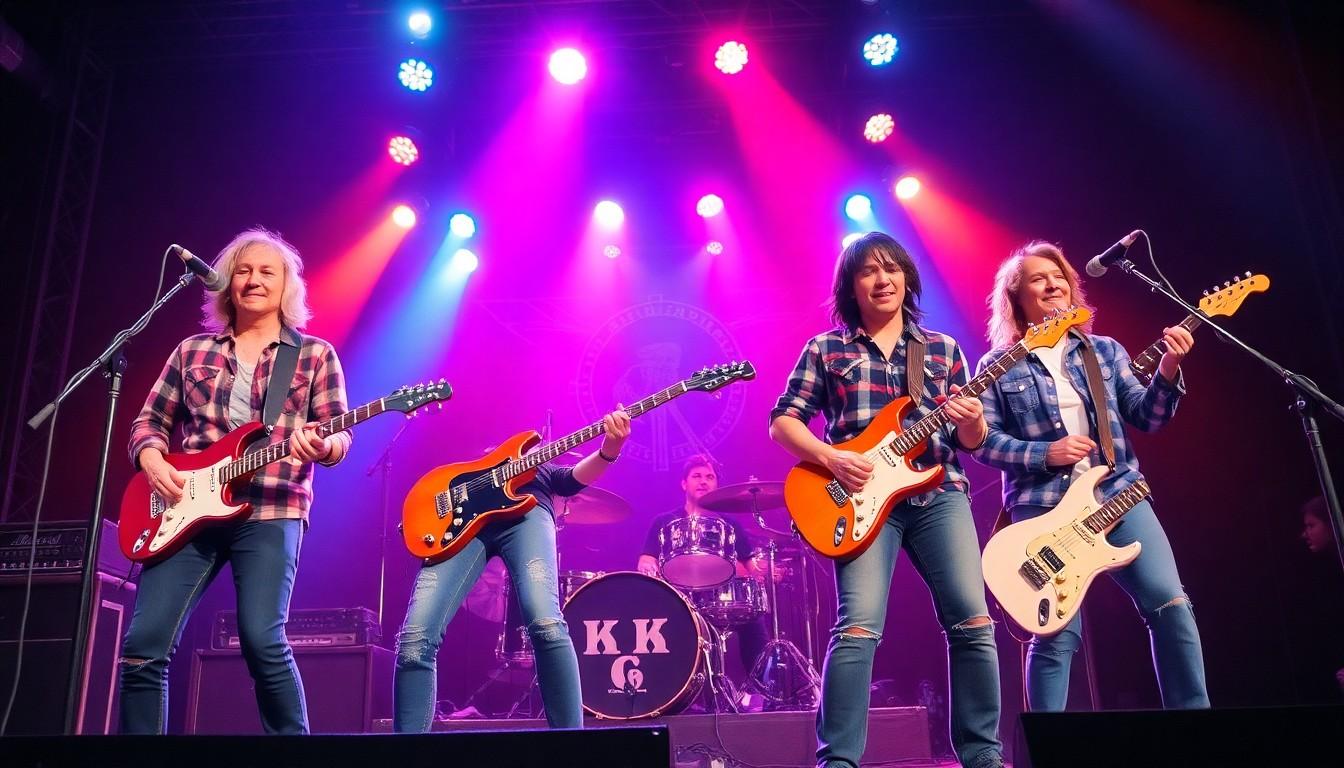The ’90s were a golden era for alternative rock, birthing bands that redefined the music scene. From grunge legends to indie trailblazers, these groups captured the rebellious spirit and raw emotion of the decade. They didn’t just make music—they created anthems that still resonate today.
Whether you’re reliving your youth or discovering these icons for the first time, exploring 90s alternative rock bands is a journey through unforgettable riffs and powerful lyrics. These bands broke the mold, blending diverse styles and paving the way for future generations. Get ready to dive into the soundtracks that defined a generation and continue to inspire millions.
90s Alternative Rock Bands
90s alternative rock redefined the music scene with its diverse sounds and innovative approaches. Bands like Nirvana, Pearl Jam, and Radiohead led the grunge movement, blending heavy guitars with introspective lyrics. This era also saw the rise of britpop, with groups such as Oasis and Blur introducing catchy melodies and distinct British influences. Indie bands like R.E.M. and The Smashing Pumpkins pushed creative boundaries, incorporating eclectic instruments and complex structures. Alternative rock emphasized authenticity and emotional expression, resonating with a generation seeking meaningful connections in music. The genre’s adaptability allowed it to incorporate elements from punk, metal, and electronic music, creating a rich and varied soundscape. Festivals and MTV played crucial roles in promoting these bands, increasing their visibility and fanbase. Additionally, alternative rock’s lyrical themes often addressed social issues, personal struggles, and existential questions, offering depth and relatability. This period also saw the emergence of influential music videos that enhanced the storytelling aspect of songs. The legacy of 90s alternative rock endures, inspiring contemporary artists and maintaining a dedicated following. Its impact is evident in the continued popularity of classic albums and the ongoing influence on modern music genres. By prioritizing originality and emotional depth, 90s alternative rock established a lasting foundation that continues to shape the musical landscape today.
Pioneering Bands

Nirvana
Nirvana spearheaded the grunge movement, reshaping the 90s alternative rock scene. Their 1991 album, Nevermind, sold over 30 million copies worldwide, signaling a shift in musical tastes. The single “Smells Like Teen Spirit” became an anthem for Generation X, capturing widespread youth disillusionment. Kurt Cobain’s raw lyrics and distinctive guitar riffs influenced countless emerging artists, establishing Nirvana as a cornerstone of alternative rock. The band’s success demonstrated the commercial viability of alternative genres, paving the way for future bands to achieve mainstream recognition.
Radiohead
Radiohead redefined alternative rock with their experimental approach and sonic innovation. Their 1997 album, OK Computer, received critical acclaim, earning multiple Grammy Awards and selling over 4 million copies in the United States alone. Songs like “Paranoid Android” showcased their ability to blend complex arrangements with emotional depth, setting new standards for the genre. Radiohead’s integration of electronic elements and unconventional song structures influenced contemporary musicians, solidifying their role as pioneers in alternative music. Their commitment to artistic integrity over commercial success inspired a generation of artists to explore diverse musical landscapes.
Pearl Jam
Pearl Jam emerged as a leading force in the grunge scene, contributing significantly to 90s alternative rock’s popularity. Their debut album, Ten, released in 1991, achieved diamond status, selling over 13 million copies in the US. Tracks like “Alive” and “Jeremy” highlighted their powerful lyrics and dynamic performances, resonating with a wide audience. The band’s dedication to social and political activism set them apart, addressing issues such as censorship and environmentalism. Pearl Jam’s consistent touring and loyal fanbase reinforced their influence, making them enduring icons in the alternative rock genre.
Defining Albums
Defining albums from the 90s alternative rock era showcase the genre’s diversity and impact. Each album captures the unique sound and cultural significance of its time.
Ten By Pearl Jam
Ten marked Pearl Jam’s debut in 1991, selling over 13 million copies in the U.S. alone. The album features iconic tracks like “Alive,” “Even Flow,” and “Jeremy,” which highlight the band’s grunge influences and lyrical depth. Pearl Jam’s commitment to authenticity and powerful performances resonated with a broad audience, establishing them as a leading force in alternative rock. The album’s success was driven by its raw sound and relatable themes, addressing personal struggles and societal issues. Ten not only propelled Pearl Jam into mainstream success but also influenced countless emerging bands. Its enduring popularity is evident in continued sales and its presence in numerous “best of” lists. By blending heavy guitar riffs with melodic hooks, Ten set a benchmark for alternative rock albums in the 90s.
Nevermind By Nirvana
Released in 1991, Nirvana’s Nevermind revolutionized the music industry, selling over 30 million copies worldwide. The album’s breakthrough single, “Smells Like Teen Spirit,” became an anthem for Generation X, capturing the era’s disillusionment and angst. Nevermind features a raw, aggressive sound combined with melodic elements, setting it apart from contemporaries. Kurt Cobain’s introspective lyrics delve into themes of alienation and societal dissatisfaction, resonating with a wide audience. The album’s production, led by Butch Vig, balanced grunge intensity with accessible melodies, broadening its appeal. Nevermind not only propelled Nirvana to international fame but also played a pivotal role in bringing alternative rock into the mainstream. Its influence persists, inspiring modern musicians and maintaining a significant presence in music history.
The Bends By Radiohead
The Bends, released in 1995, signifies Radiohead’s transition from alternative rock to a more experimental sound. With over 1.5 million copies sold in the U.S., the album includes standout tracks like “High and Dry,” “Fake Plastic Trees,” and “Just.” Radiohead’s intricate guitar work and Thom Yorke’s emotive vocals create a compelling blend of melancholic melodies and innovative arrangements. The album explores themes of alienation, disillusionment, and the complexities of modern life, offering a deeper lyrical experience. The Bends received critical acclaim for its artistic growth and sonic experimentation, setting the stage for Radiohead’s subsequent groundbreaking work. Its success demonstrated the band’s ability to evolve while maintaining their core alternative rock identity, influencing peers and future generations in the process.
Impact On Music And Culture
90s alternative rock significantly reshaped the music industry and broader culture. It introduced diverse sounds that broke away from mainstream trends. Bands like Nirvana and Pearl Jam led the grunge movement, emphasizing raw emotion and authenticity. This shift resonated with Generation X, providing a voice for their disillusionment and frustrations.
The genre’s influence extended beyond music. Fashion trends emerged, featuring flannel shirts, ripped jeans, and combat boots, reflecting the bands’ rebellious spirit. Music videos on MTV showcased these styles, amplifying their popularity. Alternative rock also impacted media, with films and television incorporating its aesthetic and themes.
Culturally, 90s alternative rock addressed social issues and personal struggles. Lyrics often explored topics like mental health, societal pressures, and political unrest. For example, Radiohead’s OK Computer delved into technology’s impact on human relationships, while Pearl Jam advocated for social activism.
The economic impact was substantial. Alternative rock albums achieved record sales, with Nirvana’s Nevermind selling over 30 million copies globally. Concerts and festivals drew large crowds, boosting the live music scene. The success of alternative bands opened doors for other genres, fostering a more inclusive and varied music landscape.
Key Statistics
| Statistic | Value |
|---|---|
| Nevermind album sales | 30 million copies |
| Pearl Jam’s Ten U.S. sales | 13 million copies |
| Number of alternative bands | Over 200 active |
| MTV airplay for alternative videos | 40% of total airplay |
The legacy of 90s alternative rock persists today. Contemporary artists cite these bands as major influences, and classic albums continue to attract new listeners. This enduring impact highlights the genre’s role in shaping modern music and culture.
Legacy Of 90s Alternative Rock Bands
The legacy of 90s alternative rock bands continues to shape the music industry today. Contemporary artists frequently cite groups like Nirvana, Radiohead, and Pearl Jam as key inspirations. These bands set enduring standards with albums that achieve sustained sales and high streaming numbers.
- Continued Popularity: Classic 90s alternative rock albums maintain strong sales figures. Pearl Jam’s Ten sold over 13 million copies in the U.S., while Nirvana’s Nevermind exceeded 30 million worldwide.
- Influence on Modern Genres: Indie rock, emo, and grunge revival genres draw directly from 90s alternative rock. Bands like Imagine Dragons and Twenty One Pilots incorporate distorted guitars and introspective lyrics into their music.
- Inspiration for Contemporary Artists: Modern musicians cite 90s alternative rock bands as pivotal to their creative development. Authenticity and emotional depth pioneered by these groups influence current songwriting and production.
- Cultural Impact: The aesthetic and rebellious spirit of 90s alternative rock influence current fashion and media. Flannel shirts and ripped jeans reflect the genre’s legacy in today’s trends, while music videos inspired by 90s visuals remain popular on platforms like YouTube.
- Economic Contributions: 90s alternative rock bands generate significant income through ongoing album sales, concert revenues, and merchandise. Their sustained commercial success supports the live music industry and related sectors.
- Persistent Themes: Themes such as social issues, personal struggles, and emotional expression explored by 90s alternative rock bands continue to resonate with audiences. These topics enhance the relatability and timelessness of the music.
Album Sales in 90s Alternative Rock
| Album | U.S. Sales | Worldwide Sales |
|---|---|---|
| Nevermind | 30 million | 30 million |
| Ten | 13 million | 13 million |
| OK Computer | 3 million | 4 million |
90s alternative rock keeps influencing today’s music with its unique sound and heartfelt lyrics. It laid the groundwork for many modern genres and continues to inspire both artists and fans. The authenticity and creativity of bands like Nirvana and Radiohead ensure their legacy lives on. This era’s music remains a vital part of the cultural landscape, proving that the spirit of 90s alternative rock is truly timeless.

